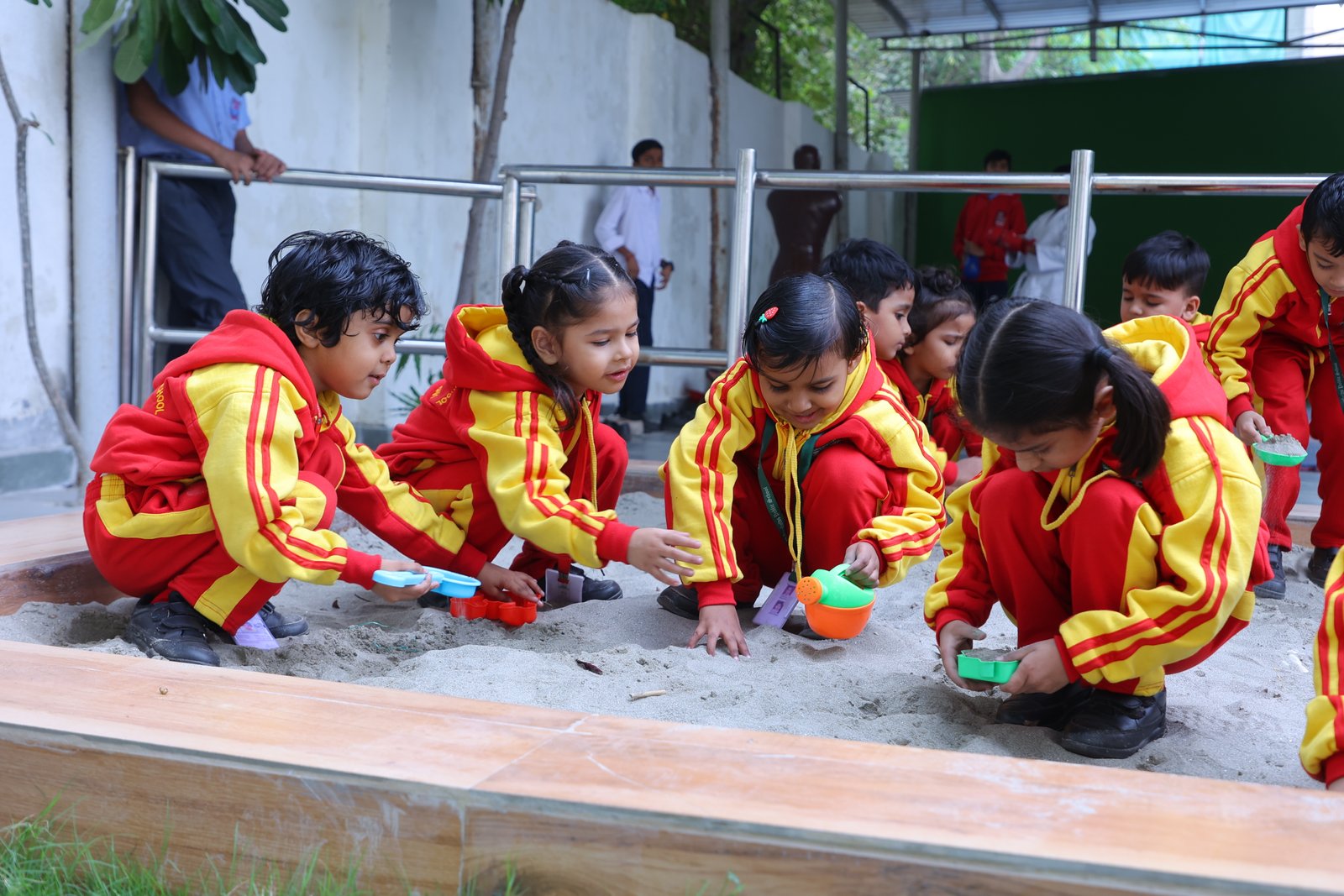The school curriculum is based on the National Framework of education and designed as per the guidelines of C.B.S.E. The school holds classes from 1st to Sr. Secondary stage of education with English as the medium of instruction. General Knowledge, sports, Visual and performing art as well as yoga form an essential part of the school curriculum. It encompasses general objectives of learning courses of study, subject wise instructional objectives and content, pedagogical practices and assessment guide lines. The Curriculum envisages individualize personal learning acumen and seeks to explore the potential OF students in acquiring substantial knowledge and skill through academic records. Children are imparted quality education with the help of computer-based programmed lessons and other audio-visual media. To maintain an ideal standard, ratio between teacher and student is kept within the limits.

Formal education system is introduced using the NCERT syllabi. Art & craft, Yoga, Karate, Music, Computers, Dance, Abacus ,Robotics etc. are however, added in the curriculum. This aids the overall development of the character and personality. From classes V to VIII a third language Sanskrit or French has been included under the three language formula of NPE.
Syllabus prescribed by CBSE are the basis of the courses imparted in these classes.


Subjects taught are : English, Hindi, Sanskrit, Mathematics, Science, Social Science, Information Technology, Art Education , Physical & Health Education and Work Experience.
Subjects taught are:

CAL allows students to have an active role in the teaching and learning process. It provides teachers with more options to teach and more time to evaluate progress of activities. It prevents barrier such as when, where, and limited resources.
It refers to an overall integrated approach of instructional methods. Computer aided learning is a device/learning strategy to make teaching more interesting joyful and sustainable.
Activity-based learning is indulging students in activities by stimulating their senses, such as sight, smell, vision or feeling, and getting them involved in the subject. Besides encouraging kids to enjoy their learning experience, activity-based learning has many benefits, including:

© 2025 Greenfields Public School Vivek Vihar, Delhi. All Rights Reserved.